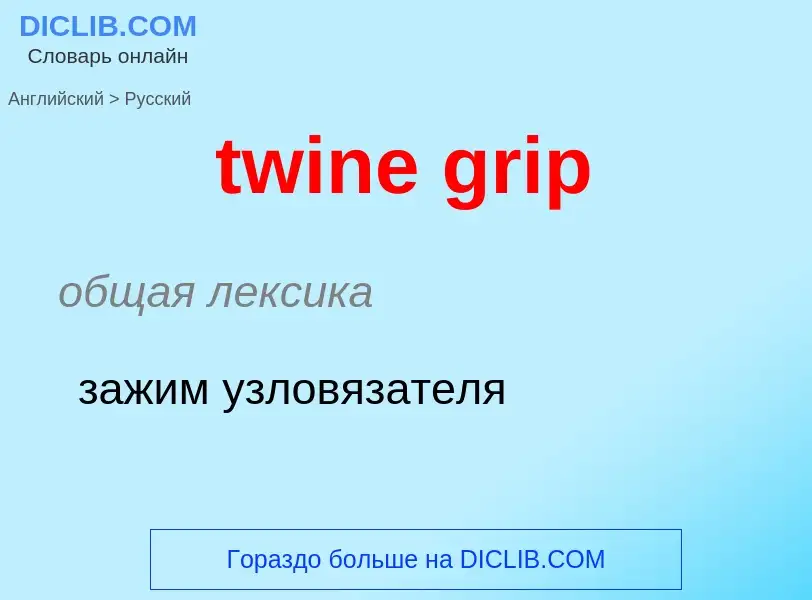Translation and analysis of words by ChatGPT artificial intelligence
On this page you can get a detailed analysis of a word or phrase, produced by the best artificial intelligence technology to date:
- how the word is used
- frequency of use
- it is used more often in oral or written speech
- word translation options
- usage examples (several phrases with translation)
- etymology
twine grip - translation to russian
общая лексика
зажим узловязателя
сельское хозяйство
сноповязальный шпагат
[twain]
общая лексика
бечевка
бичевка
шпагат
Смотрите также
существительное
[twain]
общая лексика
бечёвка
шпагат
шнурок
вьющийся стебель
кольца (змеи)
узел
сплетение
скручивание
нечто
полученное скручиванием
бечевка, шпагат, шнурок
кольца (змеи)
сплетение, скручивание
глагол
общая лексика
вить
сучить
скручивать
сплетать
перевивать
переплетать
обвивать
обвиваться
обхватить (борьба)
опоясывать
окружать
обносить
виться (о реке, дороге)
извиваться (о змее)
плести, сплетать (венок и т. п.)
свивать, скручивать
опоясывать, окружать, обносить
диалектизм
корчиться (от боли)
Definition
Wikipedia

Twine is a strong thread, light string or cord composed of two or more thinner strands twisted, and then twisted together (plied). The strands are plied in the opposite direction to that of their twist, which adds torsional strength to the cord and keeps it from unravelling. This process is sometimes called reverse wrap. The same technique used for making twine is also used to make thread, which is thinner, yarn, and rope, which is stronger and thicker, generally with three or more strands.
Natural fibres used for making twine include wool, cotton, sisal, jute, hemp, henequen, paper, and coir. A variety of synthetic fibres are also used. Twine is a popular substance used in modern-day crafting.



